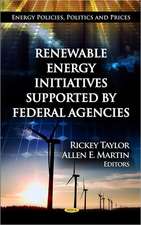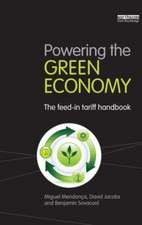Green Movement in Business
Editat de Karin E. Sanchezen Limba Engleză Paperback – 27 iul 2009
Preț: 303.92 lei
Preț vechi: 408.39 lei
-26% Nou
Puncte Express: 456
Preț estimativ în valută:
58.18€ • 60.48$ • 48.24£
58.18€ • 60.48$ • 48.24£
Carte disponibilă
Livrare economică 17-31 ianuarie 25
Preluare comenzi: 021 569.72.76
Specificații
ISBN-13: 9781606921883
ISBN-10: 1606921886
Pagini: 160
Ilustrații: b/w photos
Dimensiuni: 152 x 230 x 11 mm
Greutate: 0.31 kg
Ediția:New.
Editura: Nova Science Publishers Inc
ISBN-10: 1606921886
Pagini: 160
Ilustrații: b/w photos
Dimensiuni: 152 x 230 x 11 mm
Greutate: 0.31 kg
Ediția:New.
Editura: Nova Science Publishers Inc
Cuprins
Preface; Guide to Purchasing Green Power; The Greening of U.S. Corporations; EPA's Green Power Partnership: Environmental Choice ; Index.











